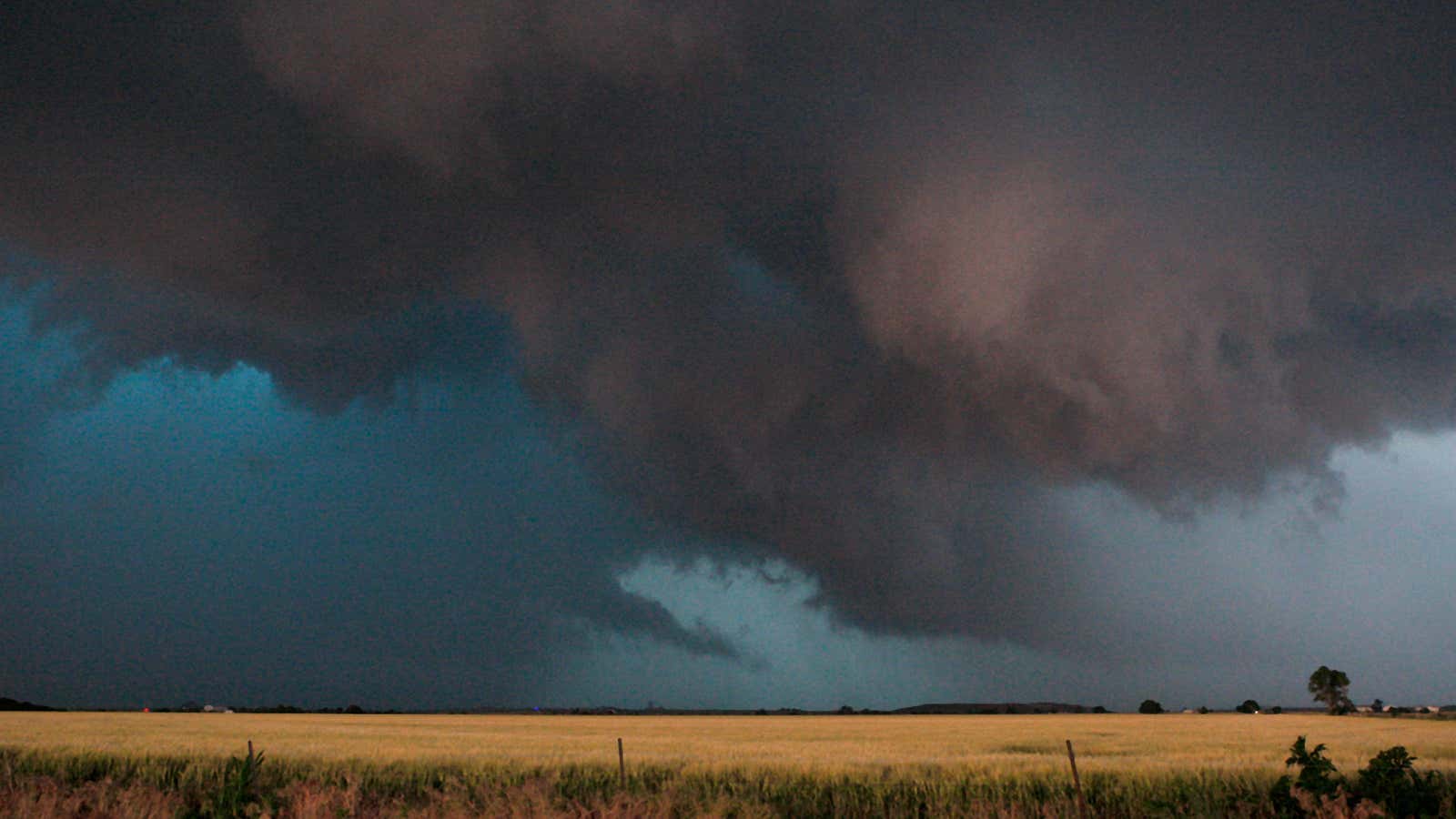Nothing was going to stop Theunis Wessels from mowing his lawn last Friday. Not even a looming tornado.
As he tackled the item on his to-do list at his home in Alberta, Canada on June 2, his wife, Cecilia Wessels, took a nap. She awoke to find her daughter fretting about what looked like a tornado in the sky. Wessels snapped a picture of the storm, which her husband, blithely continuing with his chore, photobombed.
“I literally took the picture to show my mum and dad in South Africa, ‘Look, there’s a tornado,'” Cecilia Wessels told the Canadian Press Saturday. “And now everyone is like, ‘Why is your husband mowing the lawn?’”
It’s a fair question. And it’s one that many others were asking after Wessels posted the photo on Facebook, captioned “My beast mowing the lawn with the breeze in his hair”:
The image has gone viral as thousands delight in its absurd juxtaposition—heightened by Theunis Wessels reassuring the AP that he was “keeping an eye on it.”
“I did ask him if he was coming inside with that thing in the clouds … and he calmly said no,” his wife told the AP on Sunday.
Thankfully, the Wessels weren’t in much real danger: The twister was further away than it seems in the image, and moving away from the Wessels’ home, Theunis told AP. There were no reported injuries or damage caused by the tornado.
But there’s something just so perfectly on-the-nose about the image, which some pointed out would probably have been deemed “too literal” if it were a painting: The fragility of our man-made civilization is made explicit in the tremendous difference in size, scale, and power between the environment and us meager humanoids.
Coming right after US president Donald Trump announced his decision to walk away from a major international agreement to reduce climate change, the photo prompted a slew of internet memes and tweets making the comparison to living in the Trump era. Some recognized in it the compartmentalization that many use to cope with today’s stressful political climate.
Less politically, some tweets pointed to Wessels’ stoic ability to keep his eye on the task at hand, despite the epic meteorological phenomenon happening behind him—perhaps having achieved a state of peak-dad nirvana.
As for whether there’s an actual connection between the image and climate change, Pennsylvania State University climate scientist Michael Mann tells Quartz that the jury is still out on whether tornadoes have increased. Warming does increase turbulent energy available for strong thunderstorm activity, but several potentially competing effects are involved, and when it comes to the required twisting of winds, the impact is regionally variable, Mann said.
On average, Alberta sees about 15 tornadoes per year, making Friday’s twister relatively unexceptional. The area has seen four tornadoes in the past few days, which Mann says is somewhat unusual—and he added that he expects that as global climate change progresses, “we can also expect tornadoes to be found in regions that they were previously not found.”
